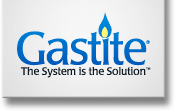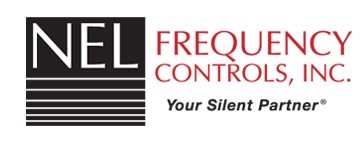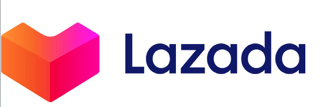Global Astaxanthin ,With Breakdown Data of Capacity, Sales, Revenue, Price, Cost and Gross Profit
- Report Code : XYZ1306274
- Published On: Jan, 2020
- Category : Chemicals & Materials
- Pages : 112
-
In this report, global Astaxanthin Market will reach 91.21 Million USD by the end of 2023 with a CAGR of 3.68%
The global Astaxanthin market was valued at 73.44 Million USD in 2017 and will reach 91.21 Million USD by the end of 2023, growing at a CAGR of 3.68% during 2017-2023.
Astaxanthin is a naturally occurring dark red carotenoid found in nature primarily in aquatic animals such as salmon, trout, krill, shrimp, crayfish, and crustaceans. Astaxanthin is more than just a red pigment, it is one of the most powerful lipophilic antioxidants yet discovered. It has the unique capacity to quench free radicals and reactive species of oxygen and to inhibit lipid peroxidation. Studies have shown natural astaxanthin to be over 500 times stronger than vitamin E and much more potent than other carotenoids such as lutein, lycopene and β-carotene. Moreover, Astaxanthin a xanthophyll carotenoid, is a nutrient with a unique molecule structure, it does not convert to vitamin a (retinol) and has no “pro-oxidant” activity.
Astaxanthin can be divided into two categories—Natural Astaxanthin type and Synthetic Astaxanthin type. Synthetic Astaxanthin type sales market share accounted for the highest proportion, with a figure of 82.11% in 2017, Natural Astaxanthin type account for 17.89%.
The sales market share of global Astaxanthin in Nutraceuticals uses, Cosmetics use, Food & beverages use, Feed use and other applications have been stable year by year, at 9.58%, 3.96%, 3.14%, 80.37% and 2.95% respectively in 2017, and for several consecutive years, the amplitude was within one percent. This indicates that the segment of the Astaxanthin in the global market tends to be fixed without great changes. Among them, the Astaxanthin market has the most promising sales prospects in Feed use.
Our research center data shows that North America is the biggest contributor to the Astaxanthin revenue market, accounted for 37.32% of the total global market with a revenue of 27.41 million USD in 2017, followed by Europe, 21.62% with a revenue of 15.88 million USD.
Cyanotech is the largest company in the global Astaxanthin market, accounted for 26.74% of the revenue market share in 2017, followed by DSM and Fuji, accounted for 20.79% and 17.92% of the revenue market share in 2017.
This report focuses on top manufacturers in global market, Involved the assessment of Sales, price, revenue and market share for each manufacturer, covering
DSM
BASF
Cyanotech
Fuji
BGG
Yunnan Alphy Biotech
Algatechnologies
Parry Nutraceuticals
Jingzhou Natural Astaxanthin
JX Nippon Oil& Energy
Supreme Biotechnologies
Biogenic
Zhejiang NHU
On the basis of product, this report displays the Sales, revenue, price, market share and growth rate of each type, primarily split into
Natural Astaxanthin
Synthetic Astaxanthin
By Application, this report focuses on Sales, Market share and Growth Rate of each application, can be divided into
Nutraceuticals
Cosmetics
Food & beverages
Feed
Others
By Regions, this report splits global market into several key regions, with Sales, Revenue, Price and Gross Margin market share of top players in these regions, from 2014 to 2026 (forecast), like
China
USA
Europe
Japan
Korea
India
Southeast Asia
South America
If you have
Any special requirements, please let us know and we will offer you the report as you want. -
With tables and figures helping analyze worldwide Global Astaxanthin With Breakdown Data of Capacity Sales Revenue market, this research provides key statistics on the state of the industry and is a valuable source of guidance and direction for companies and individuals interested in the market.
Global Astaxanthin Market Professional Survey Report 2019
1 Report Overview1.1 Definition and Specification
1.2 Manufacturers and Region Overview
1.2.1 Manufacturers Overview
1.2.2 Regions Overview1.3 Type Overview
1.3.1 Natural Astaxanthin
1.3.2 Synthetic Astaxanthin1.4 Application Overview
1.4.1 Nutraceuticals
1.4.2 Cosmetics
1.4.3 Food & beverages
1.4.4 Feed
1.4.5 Others1.5 Industrial Chain
1.5.1 Astaxanthin Industrial Chain
1.5.2 Upstream
1.5.3 Downstream2.1 The Overall Market Performance(Volume)
2.1.1 Natural Astaxanthin
2.1.2 Synthetic Astaxanthin2.2 The Overall Market Performance(Value)
2.2.1 Natural Astaxanthin
2.2.2 Synthetic Astaxanthin
3 Global Astaxanthin Market Assessment by Application3.1 Overall Market Performance (Volume)
3.2 Nutraceuticals
3.3 Cosmetics
3.4 Food & beverages
3.5 Feed
3.6 Others
4 Competitive Analysis4.1 DSM
4.1.1 DSM Profiles
4.1.2 DSM Product Information
4.1.3 DSM Astaxanthin Business Performance
4.1.4 SWOT Analysis4.2 BASF
4.2.1 BASF Profiles
4.2.2 BASF Product Information
4.2.3 BASF Astaxanthin Business Performance
4.2.4 SWOT Analysis4.3 Cyanotech
4.3.1 Cyanotech Profiles
4.3.2 Cyanotech Product Information
4.3.3 Cyanotech Astaxanthin Business Performance
4.3.4 SWOT Analysis4.4 Fuji
4.4.1 Fuji Profiles
4.4.2 Fuji Product Information
4.4.3 Fuji Astaxanthin Business Performance
4.4.4 SWOT Analysis4.5 BGG
4.5.1 BGG Profiles
4.5.2 BGG Product Information
4.5.3 BGG Astaxanthin Business Performance
4.5.4 SWOT Analysis4.6 Yunnan Alphy Biotech
4.6.1 Yunnan Alphy Biotech Profiles
4.6.2 Yunnan Alphy Biotech Product Information
4.6.3 Yunnan Alphy Biotech Astaxanthin Business Performance
4.6.4 SWOT Analysis
4.7 Algatechnologies
4.7.1 Algatechnologies Profiles
4.7.2 Algatechnologies Product Information
4.7.3 Algatechnologies Astaxanthin Business Performance
4.7.4 SWOT Analysis
4.8 Parry Nutraceuticals
4.8.1 Parry Nutraceuticals Profiles
4.8.2 Parry Nutraceuticals Product Information
4.8.3 Parry Nutraceuticals Astaxanthin Business Performance
4.8.4 SWOT Analysis
4.9 Jingzhou Natural Astaxanthin
4.9.1 Jingzhou Natural Astaxanthin Profiles
4.9.2 Jingzhou Natural Astaxanthin Product Information
4.9.3 Jingzhou Natural Astaxanthin Astaxanthin Business Performance
4.9.4 SWOT Analysis4.10 JX Nippon Oil& Energy
4.10.1 JX Nippon Oil& Energy Profiles
4.10.2 JX Nippon Oil& Energy Product Information
4.10.3 JX Nippon Oil& Energy Astaxanthin Business Performance
4.10.4 SWOT Analysis
4.11 Supreme Biotechnologies
4.12 Biogenic
4.13 Zhejiang NHU
5 Competitive Lanscape5.1 Global Astaxanthin Capacity (K Units) and Market Share of Manufacturers (2014-2020)
5.2 Global Astaxanthin Sales (K Units) and Market Share of Manufacturers (2014-2020)
5.3 Global Astaxanthin Revenue (M USD) and Market Share of Manufacturers (2014-2020)
5.4 Global Astaxanthin Price (USD/Unit) of Manufacturers (2014-2020)
5.5 Global Astaxanthin Gross Margin of Manufacturers (2014-2020)
5.6 Market Concentration
6 Regional Market Analysis6.1 China Market Performance for Manufacturers
6.1.1 China Astaxanthin Sales (K Units) and Market Share of Manufacturers (2014-2020)
6.1.2 China Astaxanthin Revenue (M USD) and Market Share of Manufacturers (2014-2020)
6.1.3 China Astaxanthin Price (USD/Unit) of Manufacturers (2014-2020)
6.1.4 China Astaxanthin Gross Margin of Manufacturers (2014-2020)
6.1.5 Market Concentration6.2 USA Market Performance for Manufacturers
6.2.1 USA Astaxanthin Sales (K Units) and Market Share of Manufacturers (2014-2020)
6.2.2 USA Astaxanthin Revenue (M USD) and Market Share of Manufacturers (2014-2020)
6.2.3 USA Astaxanthin Price (USD/Unit) of Manufacturers (2014-2020)
6.2.4 USA Astaxanthin Gross Margin of Manufacturers (2014-2020)
6.2.5 Market Concentration6.3 Europe Market Performance for Manufacturers
6.3.1 Europe Astaxanthin Sales (K Units) and Market Share of Manufacturers (2014-2020)
6.3.2 Europe Astaxanthin Revenue (M USD) and Market Share of Manufacturers (2014-2020)
6.3.3 Europe Astaxanthin Price (USD/Unit) of Manufacturers (2014-2020)
6.3.4 Europe Astaxanthin Gross Margin of Manufacturers (2014-2020)
6.3.5 Market Concentration6.4 Japan Market Performance for Manufacturers
6.4.1 Japan Astaxanthin Sales (K Units) and Market Share of Manufacturers (2014-2020)
6.4.2 Japan Astaxanthin Revenue (M USD) and Market Share of Manufacturers (2014-2020)
6.4.3 Japan Astaxanthin Price (USD/Unit) of Manufacturers (2014-2020)
6.4.4 Japan Astaxanthin Gross Margin of Manufacturers (2014-2020)
6.4.5 Market Concentration6.5 Korea Market Performance for Manufacturers
6.5.1 Korea Astaxanthin Sales (K Units) and Market Share of Manufacturers (2014-2020)
6.5.2 Korea Astaxanthin Revenue (M USD) and Market Share of Manufacturers (2014-2020)
6.5.3 Korea Astaxanthin Price (USD/Unit) of Manufacturers (2014-2020)
6.5.4 Korea Astaxanthin Gross Margin of Manufacturers (2014-2020)
6.5.5 Market Concentration6.6 India Market Performance for Manufacturers
6.6.1 India Astaxanthin Sales (K Units) and Market Share of Manufacturers (2014-2020)
6.6.2 India Astaxanthin Revenue (M USD) and Market Share of Manufacturers (2014-2020)
6.6.3 India Astaxanthin Price (USD/Unit) of Manufacturers (2014-2020)
6.6.4 India Astaxanthin Gross Margin of Manufacturers (2014-2020)
6.6.5 Market Concentration
6.7 Southeast Asia Market Performance for Manufacturers
6.7.1 Southeast Asia Astaxanthin Sales (K Units) and Market Share of Manufacturers (2014-2020)
6.7.2 Southeast Asia Astaxanthin Revenue (M USD) and Market Share of Manufacturers (2014-2020)
6.7.3 Southeast Asia Astaxanthin Price (USD/Unit) of Manufacturers (2014-2020)
6.7.4 Southeast Asia Astaxanthin Gross Margin of Manufacturers (2014-2020)
6.7.5 Market Concentration
6.8 South America Market Performance for Manufacturers
6.8.1 South America Astaxanthin Sales (K Units) and Market Share of Manufacturers (2014-2020)
6.8.2 South America Astaxanthin Revenue (M USD) and Market Share of Manufacturers (2014-2020)
6.8.3 South America Astaxanthin Price (USD/Unit) of Manufacturers (2014-2020)
6.8.4 South America Astaxanthin Gross Margin of Manufacturers (2014-2020)
6.8.5 Market Concentration
7 Global Astaxanthin Market Assessment by Regions7.1 Global Astaxanthin Capacity (K Units) and Market Share by Regions (2014-2020)
7.2 Global Astaxanthin Sales (K Units) and Market Share by Regions (2014-2020)
7.3 Global Astaxanthin Revenue (M USD) and Market Share by Regions (2014-2020)
7.4 Global Astaxanthin Price (USD/Unit) by Regions (2014-2020)
7.5 Global Astaxanthin Gross Margin by Regions (2014-2020)
8 Capacity Analysis of Different Regions8.1 Global Astaxanthin Capacity and Growth Rate (2014-2020)
8.2 China Astaxanthin Capacity and Growth Rate (2014-2020)
8.3 USA Astaxanthin Capacity and Growth Rate (2014-2020)
8.4 Europe Astaxanthin Capacity and Growth Rate (2014-2020)
8.5 Japan Astaxanthin Capacity and Growth Rate (2014-2020)
8.6 Korea Astaxanthin Capacity and Growth Rate (2014-2020)
8.7 India Astaxanthin Capacity and Growth Rate (2014-2020)
8.8 Southeast Asia Astaxanthin Capacity and Growth Rate (2014-2020)
8.9 South America Astaxanthin Capacity and Growth Rate (2014-2020)
9 Technology and Cost Analysis9.1 Technology
9.2 Cost
10 Channel Analysis10.1 Market Channel
10.2 Manufacturing Plants Distribution of Global Astaxanthin Major Manufacturers
11 Global Astaxanthin Market Forecast by Regions11.1 Global Astaxanthin Market Forecast (2021-2026)
11.1.1 Global Astaxanthin Capacity Forecast by Regions (2021-2026)
11.1.2 Global Astaxanthin Sales Forecast by Regions (2021-2026)
11.1.2 Global Astaxanthin Revenue Forecast by Regions (2021-2026)11.2 China Astaxanthin Market Forecast (2021-2026)
11.3 USA Astaxanthin Market Forecast (2021-2026)
11.4 Europe Astaxanthin Market Forecast (2021-2026)
11.5 Japan Astaxanthin Market Forecast (2021-2026)
11.6 Korea Astaxanthin Market Forecast (2021-2026)
11.7 India Astaxanthin Market Forecast (2021-2026)
11.8 Southeast Asia Astaxanthin Market Forecast (2021-2026)
11.9 South America Astaxanthin Market Forecast (2021-2026)
12 Global Astaxanthin Market Forecast by Types (2021-2026)12.1 Overall Market Performance (Sales, Revenue)
12.2 Natural Astaxanthin
12.3 Synthetic Astaxanthin
13 Global Astaxanthin Market Forecast by Application (2021-2026)13.1 Overall Market Performance (Sales and Growth Rate)
13.2 Nutraceuticals
13.3 Cosmetics
13.4 Food & beverages
13.5 Feed
13.6 Others
14 Global Price (USD/Unit) and Gross Profit Forecast14.1 Global Astaxanthin Average Price Forecast (2021-2026)
14.2 Global Astaxanthin Gross Profit Forecast (2021-2026)
15 Conclusion
-
The Global Astaxanthin With Breakdown Data of Capacity Sales Revenue Market has been segregated into various crucial divisions including applications, types, and regions. Each market segment is intensively studied in the report contemplating its market acceptance, worthiness, demand, and growth prospects. The segmentation analysis will help the client to customize their marketing approach to have a better command of each segment and to identify the most prospective customer base.
Report Objectives / Segmentation Covered :
By Companies / players:
By Regions:
By Type:
By Application:
Frequently asked questions(FAQ's):
A large number of Global Global Astaxanthin With Breakdown Data of Capacity Sales Revenue players are focusing on individualized and innovative technologies that will provide the necessary impetus for profit and growth in the coming years.
The Global Astaxanthin With Breakdown Data of Capacity Sales Revenue Market study evaluates the year spans as follows: Historical year: 2019 to 2024; Base year: 2024; Forecast period**: 2025 to 2030 [** unless otherwise stated]
Yes, the add-on segmentation is available in the premium customised version of the Global Astaxanthin With Breakdown Data of Capacity Sales Revenue Market report for a more in-depth analysis. It aids in the calculation of refined and precise market values.
The Global Astaxanthin With Breakdown Data of Capacity Sales Revenue Industry stakeholders, executives, and experts, as well as individuals who need to develop consumer-friendly strategies and use technology to stay ahead of the competition.















